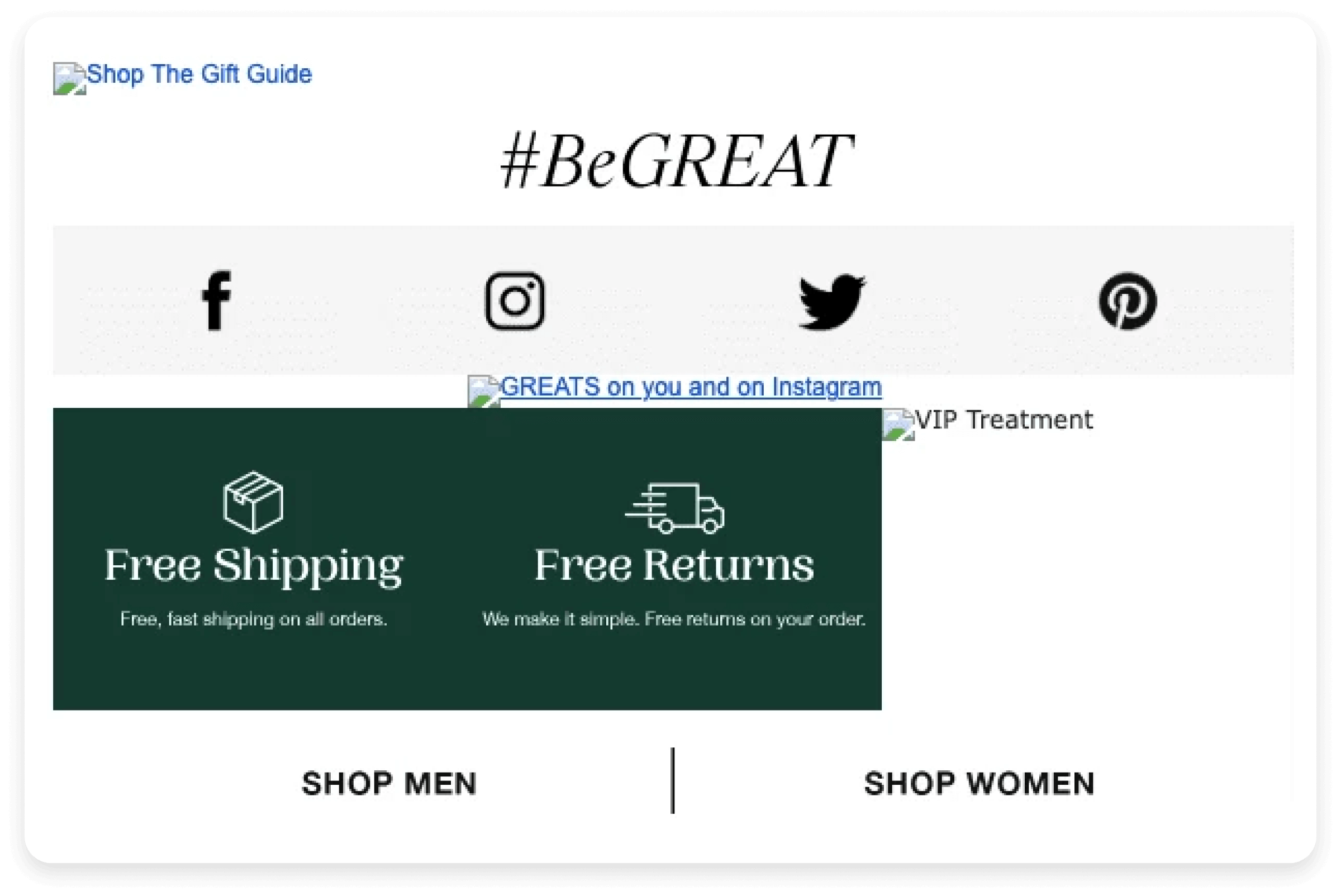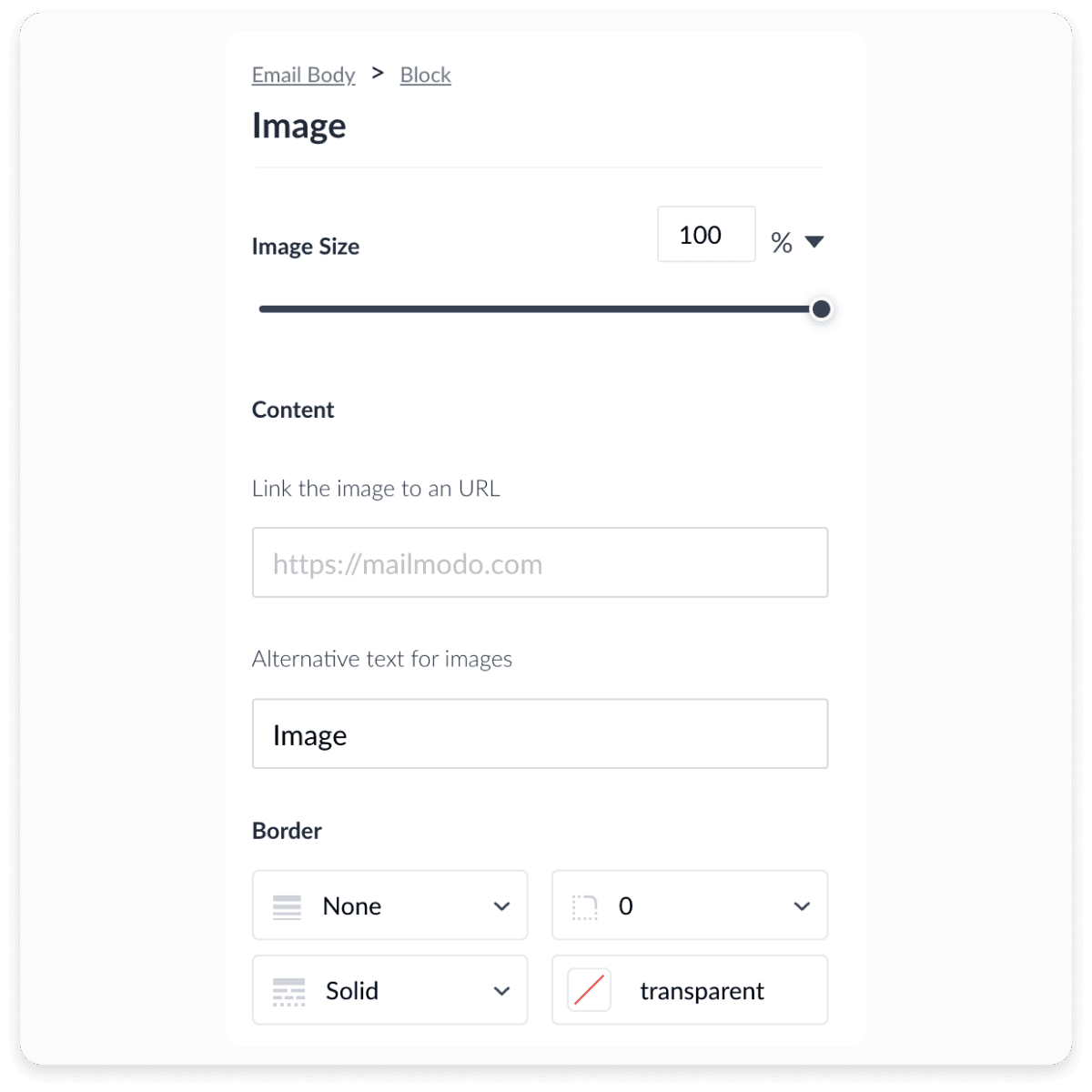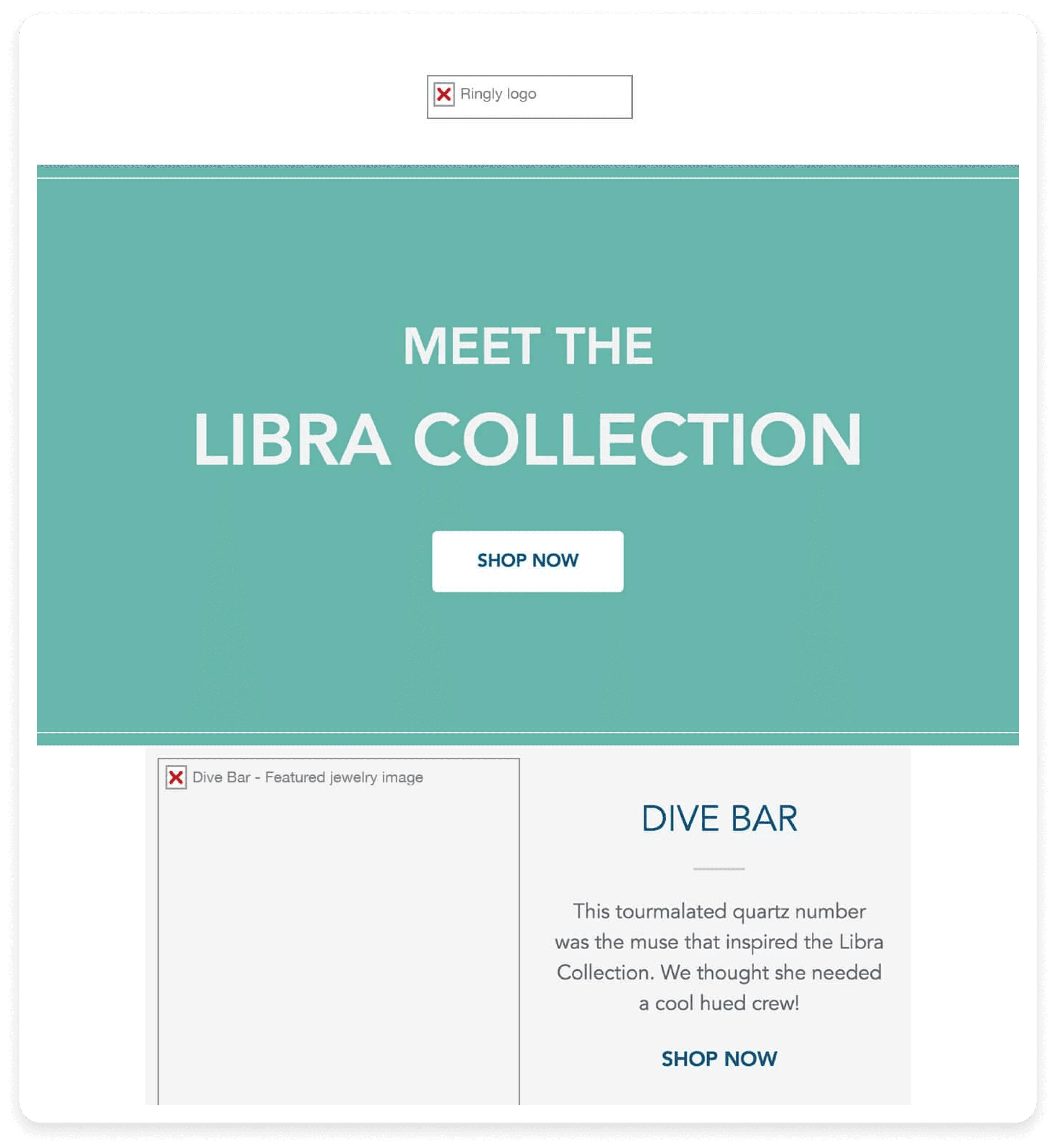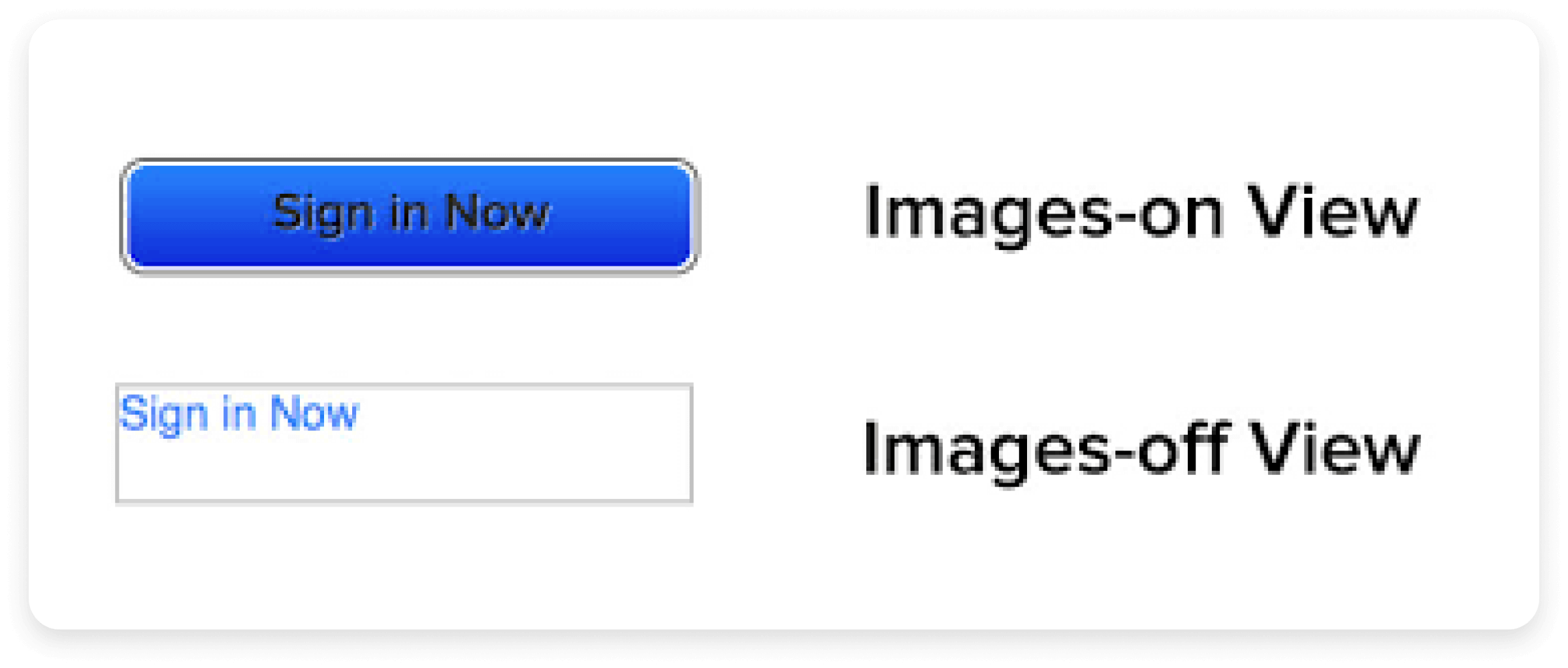What is email image blocking?
Email image blocking is a practice where email clients prevent images from loading automatically in an email.
Many mailbox providers, including Microsoft Outlook and Yahoo Mail, block images by default. This can lead to a visually unappealing email with large gaps within your emails. When this happens, images in the email appear as blank boxes with a broken image icon. This reduces email engagement and makes key elements of the message harder to understand.
This is what an email looks like when the images are blocked.

When do email clients block images?
Understanding when and why email clients block images is key to addressing this issue effectively. Here are the primary reasons:
Security: Email clients block images to protect users from security risks, such as malicious codes embedded in the content.
Bandwidth: For users with slower internet connections, blocking images helps conserve bandwidth, particularly on mobile devices.
User preference: Some email clients allow users to block or load images by default, giving them greater control over their email experience.
Which email clients block images?
Knowing which email clients are most likely to block images is crucial to deal with email image blocking effectively. The following table provides an overview:
| Email client |
Webmail clients |
Desktop clients |
Mobile clients |
| Gmail |
No |
No |
No |
| Outlook |
Yes |
Yes |
Yes |
| Yahoo |
Yes |
Yes |
Yes |
| Apple Mail |
No |
No |
No |
| Thunderbird |
Yes |
Yes |
Yes |
Problems caused by image blocking
Image blocking can lead to several issues that can negatively impact your email marketing campaigns:
Inconsistent rendering: Blocking images can result in inconsistent rendering and a poor user experience across platforms. It also leads to broken design layouts and visually unappealing emails that have lost their formatting.
Incomplete messaging: Important information is often conveyed through images, such as product showcases, infographics, or promotional banners. When images are blocked, key parts of the message may not be delivered, leading to confusion or reduced interest.
Lower click-through rates: Images are frequently used as clickable links, especially for calls to action (CTAs). If images are blocked, the opportunity for click engagement drops, which can negatively impact campaign performance by lowering click-through rates (CTR) and conversion rates.
Inability to track opens: Tracking email open rates relies on tracking pixels small, invisible images embedded in emails. If images are blocked, these tracking pixels don’t load, and the sender cannot determine whether the recipient opened the email. This can provide senders with inaccurate open rates for their email campaigns and can even affect their A/B testing results.
How to handle email image blocking
Handling email image blocking is a common challenge in email marketing, but there are several strategies you can use to mitigate its effects and ensure your emails still perform well.
1. Use alt text for images
Alt text is a backup for when images don’t load, ensuring your message gets across. For example, if you’re promoting a new product, include a descriptive alt text like “New summer collection dress” so that recipients still understand the context even if the image doesn’t appear.

Optimize image file size and format to improve email load times and avoid blocked images. Compress images carefully to reduce file size without sacrificing quality, and choose widely supported formats like JPEG or PNG. Consider using simpler designs, vector graphics, or minimalist visuals to ensure images remain clear and impactful after optimization.
3. Never send an all-image email
Relying solely on images in your emails can lead to significant portions of your message being lost if images are blocked. Instead, create hybrid emails to balance images with texts that combine text and images. This ensures that your key messages and CTAs are visible regardless of whether images load.
The image below shows how the messaging and the CTA make sense even if the images don’t load.

4. Host your images on a secure server
Ensure all image URLs are served over a secure HTTPS connection to prevent blocking by email clients that require secure hosting. Additionally, host your images on a reliable, reputable server to avoid being flagged or blocked due to poor hosting quality or a questionable server reputation. This ensures that your images load properly, reducing the risk of broken links or blocked content.
5. Implement SPF, DKIM, and DMARC
Setting up email authentication protocols like SPF, DKIM, and DMARC helps improve your sender reputation. A strong sender score reduces the likelihood of your emails being flagged as spam and lowers the chances of your images getting blocked.
Use live text in your CTAs instead of relying solely on images. Bulletproof buttons ensure your calls to action are always visible, regardless of whether images load.

Conclusion
Email image blocking can be a frustrating challenge for marketers, but by implementing these strategies, you can ensure your emails remain effective and engaging. These strategies ensure that your key message reaches your audience, even when images fail to load.
Applying these techniques will also enhance deliverability, improve engagement rates, and create a more seamless experience for recipients, ensuring your communication remains effective and impactful regardless of technical constraints.














